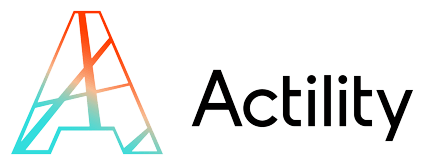Actility Webinar
Private Wireless Networks: A Global "State of the Union" on CBRS and Unlicensed Cellular
Navigating the Latest Advances in Private Cellular Deployment and the Merging of Licensed and Unlicensed LPWAN Networks for Industrial IoT

Navigating the Latest Advances in Private Cellular Deployment and the Merging of Licensed and Unlicensed LPWAN Networks for Industrial IoT





Download the slides and watch the replay by filling out this form:
In the rapidly evolving industry of private cellular networks and Industrial IoT, businesses are faced with several hurdles. These include navigating complex, varied regulatory landscapes, effectively integrating diverse technologies, understanding the potential of using public and private networks in combination, deploying cellular networks despite a steep learning curve, and identifying an array of IoT use cases suitable for private cellular networks. The increasingly blurred lines between public and private networks add further complexity.
This webinar is designed to address these pain points, simplifying and demystifying the world of private cellular networks and their applicability in the Industrial IoT sector. Step into this enlightening session that unpacks the latest developments in global unlicensed spectrum regulations and explores compelling use cases in the deployment of enterprise-grade private LTE/5G networks for Industrial IoT.
Our journey kicks off with a focus on LPWAN, a transformative force in telecom, enabling extensive wireless reach into massive IoT, low-power devices, and private networks.
Next, we will provide an update on the evolving spectrum regulation changes and discuss the spectrum bands available in Europe for deploying private LTE/5G networks.
Moving ahead, we will spotlight an array of IoT use cases that are perfectly suited for deployment over private cellular networks and delve into how these networks can be further leveraged through public/private roaming and seamless integration with other technologies, such as LoRaWAN®.
Finally, for those eager to delve into the world of private cellular without facing a steep learning curve, we will present a pre-integrated PoC kit. This all-inclusive kit merges CBRS private LTE, public/private roaming, and interoperability with LoRaWAN, catering to an expansive variety of use cases.

While public attention for new wireless technologies has been focused on the race for higher bandwidth, there are equally important innovations that focus on extending the scope of wireless technologies to Massive IoT, low-power battery-powered devices, and private networks. This is the scope of LPWAN, Low-Power Wide Area Networking technologies. Olivier will explain how LPWAN has been one of the most innovative segments of telecoms lately, with new licensed technologies like LTE-M and NB-IoT, and the unlicensed ones, such as LoRaWAN.

Tom will discuss the historical reasons behind CBRS, its regulatory framework, technology and CBRS spectrum regulations which spurred the innovation behind private Cellular deployments.

Doug will provide a summary of the recent NTIA technical report entitled, “An Analysis of Aggregate CBRS Data from April 2021 to January 2023.” The report provides an analysis of aggregate CBRS Spectrum Access System (SAS) data reported quarterly from April 1, 2021 to January 1, 2023. The data provide valuable insights into the growth of CBRS, the impact of dynamic spectrum sharing, the role of General Authorized Access (GAA) spectrum usage, and CBRS’s role in rural wireless connectivity.

Douglas Boulware
Computer Scientist at NTIA
US Department of Commerce, National Telecommunications and Information Administration, Institute for Telecommunication Sciences, The Nation’s Spectrum and Communications Lab.


This presentation will explore the approach currently taken by Ofcom to provide shared access to spectrum supporting mobile technologies for a range of players and use cases, on a localised basis. It will provide details of the different regimes and licence options in place, and highlight evidence of interest and adoption to date, as well as setting out some of the issues Ofcom is currently exploring as use of the sharing framework evolves.

Jack Hindley
Director of Spectrum Engineering at Ofcom
Jack is a Policy Principal with more than 15 years’ experience in public policy and regulation. Recent projects have included work on mobile coverage reporting and adaptive spectrum access. Jack is currently leading work to review Ofcom’s current shared access framework.


Paul Chapman
Principal Policy Manager at Ofcom
Paul is a Policy Principal with more than 15 years’ experience in spectrum regulation and authorisation policy. He is responsible for Ofcom’s licensing policy and regulatory compliance. Recent projects have included work on 26 GHz award, Amateur Radio review and authorisation of spectrum for drones.

Rohit will present the business drivers for multi-technology IoT connectivity platforms that span across licensed and unlicensed technologies and how “message mode communication” that is the dominant model used for IoT can be abstracted from the underlying network technology. ThingPark Wireless integrates different radio access technologies such as NB-IoT, LTE-M, LoRaWAN & satellite-based terrestrial networks. Rohit will also discuss how the limit separating public and private networks is often blurring, calling for private-to-public or even private-to-private roaming.

Testing CBRS can be overwhelming as there are many spare parts that need to be integrated. Rohit will present a CBRS demo kit which includes pre-packaged connectivity to deploy a private LTE network. The main use case demonstrated by this kit is to use CBRS as the backhaul technology for LoRaWAN gateways, which also illustrates the complementarity of the cellular and LoRaWAN technologies as there are currently no available IoT cellular technologies available for private networks. This demo CBRS network once deployed can be used for other CBRS use cases. The kit also allows roaming over public mobile network operators (such as T-Mobile) in the absence of private cellular coverage.

The Federal Communications Commission (FCC) is an independent agency of the United States federal government that regulates communications by radio, television, wire, satellite, and cable across the United States. The FCC maintains jurisdiction over the areas of broadband access, fair competition, radio frequency use, media responsibility, public safety, and homeland security.

MultiTech is a company involved in the manufacturing of machine-to-machine (M2M) and Internet of Things (IoT) devices. It provides products including wireless devices, modems, and routers, and it caters to sectors such as energy and transportation. The company was founded in 1970 and is headquartered in Mounds View, Minnesota.

The Office of Communications, commonly known as Ofcom, is the government-approved regulatory and competition authority for the broadcasting, telecommunications and postal industries of the United Kingdom. Ofcom has wide-ranging powers across the television, radio, telecoms and postal sectors. It has a statutory duty to represent the interests of citizens and consumers by promoting competition and protecting the public from harmful or offensive material. Some of the main areas Ofcom regulates are TV and radio standards, broadband and phones, video-sharing platforms online, the wireless spectrum and postal services.

The National Telecommunications and Information Administration (NTIA) is an agency of the United States Department of Commerce that serves as the President’s principal adviser on telecommunications policies pertaining to the United States’ economic and technological advancement and to regulation of the telecommunications industry.

Actility is the world leader in low-power wide-area networks (LPWAN) industrial-grade connectivity solutions for the Internet of Things. Actility provides its ThingPark™ platform and network technology to deploy, operate and maintain public and private wireless IoT networks within a unified, scalable and versatile network infrastructure. Most nationwide network service providers (over 50) and thousands of enterprises trust ThingPark™ all over the world. Through its subsidiary Abeeway, Actility also provides patented ultra-low power tracking solutions. ThingPark Market offers the largest selection of interoperable IoT gateways, devices and applications to simplify and accelerate deployment of numerous use cases. For more information, visit www.actility.com/contact.

© 2024 Actility’s All Rights Reserved